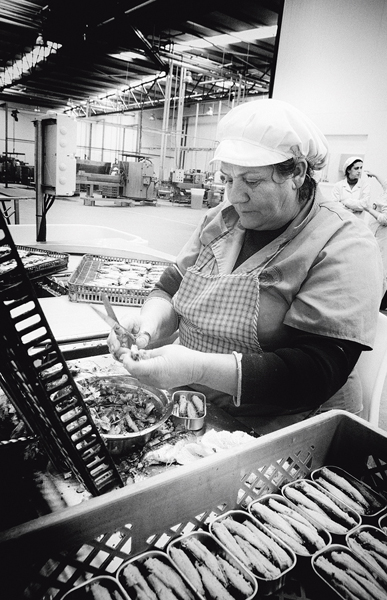
‘TIN the fish on the day of catch before sunset.’ That’s a saying popular with many tinned food manufacturers. They prefer to process fresh goods in season, and for fish this means tinning as soon as possible after catching. Tests have proven that the nutritional value of modern tinned food comes close to that of fresh produce. Storing produce also costs money. By reducing the heating-process time, it also reduces the energy bill. Tinning doesn’t guarantee good flavour though; flavour depends on the production methods and the quality of the original produce used. Like all other foods, tinned fish is all about picking the right producers.
THIS might come as a surprise to many, but tinned fish is a very seasonal product. Not only that but it also comes from well-managed and healthy stocks. The fisheries catch the fish only when the fish is in the right shape for consumption and none of the fish is lost in production. All these aspects are important in maintaining both the quality of the product, the protection of the environment and the sustainability of the fish stocks.
THE better producers will provide clear information on the contents of the tin and where it’s from. Tinned fish is available from large-scale companies who use multiple canneries that tin other foods in addition to fish. On the other end of the spectrum are many smaller, often family-run, businesses, especially in areas of Europe such as Brittany, the Spanish Basque Country, northern Portugal, Denmark and northern Germany. They tin fish from day catches and use high-quality oil or carefully selected sauces. These products are found in the aisles under their own names or as part of, for example, the Fish Tales range. It is definitely worth reading the label first before making a decision on which tinned fish to buy.